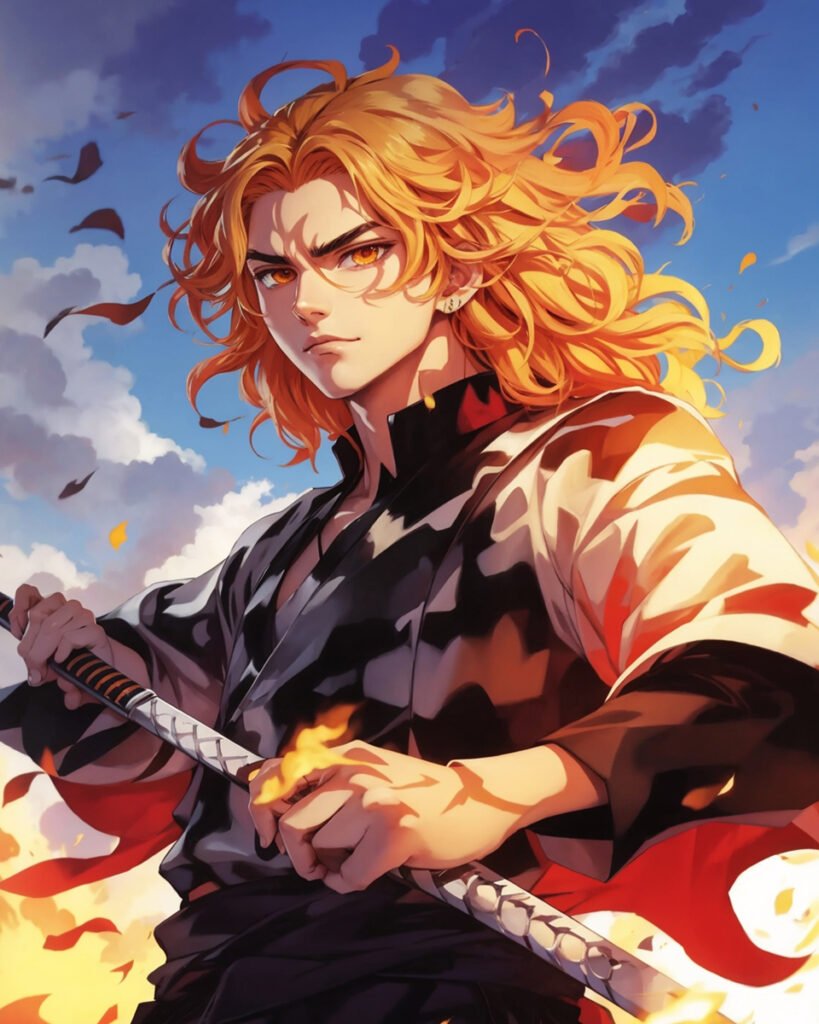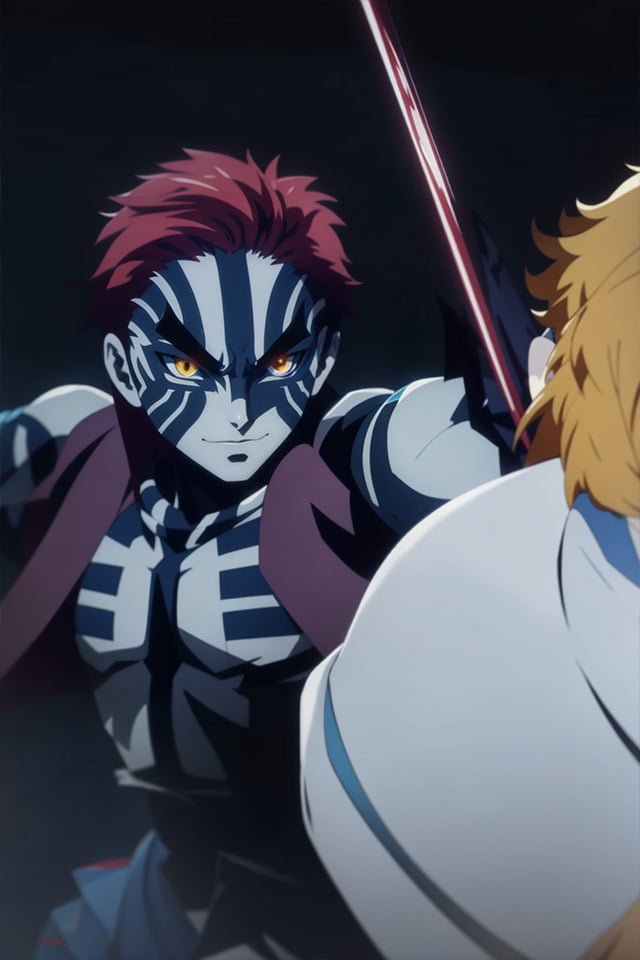
In the realm of Demon Slayer, the name Kyojuro Rengoku echoes with the flames of determination and the valor of a true warrior. As the Flame Hashira, his strength and willpower made him a beacon of hope within the Demon Slayer Corps. However, every story has its tragic chapters, and Rengoku’s demise stands as one of the most heart-wrenching moments in the saga.
Kyojuro Rengoku, the Flame Hashira, was no ordinary demon slayer. With years of dedication and hard work, he ascended to the esteemed position of Hashira,
demonstrating unparalleled swordsmanship and an indomitable spirit. His presence was crucial in leading the team comprising Tanjiro, Zenitsu, Inosuke, and Nezuko in their battle against the demonic forces on the Mugen Train.
Rengoku’s Death Scene:
The moment of Rengoku’s death was not merely a scene; it was a heart-wrenching crescendo in the Demon Slayer narrative. As he valiantly faced the Upper Rank Three demon, Akaza, the battleground became a stage for the tragic ballet of life and death. The scene, vividly portrayed, left an indelible mark on the viewers’ hearts, emphasizing the emotional weight and significance of Rengoku’s sacrifice.
The Culprit: Who Killed Rengoku?
Akaza, the menacing Upper Rank Three demon, stands revealed as the malevolent force sealing Rengoku’s fate, adding intricacy to the Demon Slayer narrative. Their clash, a pivotal moment, unfolds the struggle between the Flame Hashira and the powerful demon.
In the Mugen Train arc, Rengoku valiantly faces Akaza, but succumbs despite almost defeating him. This tragedy marks a significant sacrifice, portraying the Flame Hashira’s demise in the fight against demons. Rengoku’s death becomes a poignant episode, accentuating the perilous journey of the Demon Slayer Corps against relentless adversaries in the demon-infested world of Demon Slayer.

Akaza’s Role in Rengoku’s Death:
Akaza, a member of the detested Twelve Kizuki, earns the distinction of being one of the most loathed characters in the Demon Slayer series. Despite the animosity towards him, some argue that delving into Akaza’s backstory unveils a character with more depth.
As the formidable Upper Rank Three demon, Akaza emerges as the malevolent force sealing Rengoku’s tragic fate. The exploration of Akaza’s role as the antagonist enriches the narrative, adding layers of complexity to the clash between the Flame Hashira and this powerful demon. Their confrontation becomes a pivotal moment, shaping the trajectory of the Demon Slayer storyline.
Rengoku’s commendable performance against the demons aboard the Mugen train drew admiration, even from the boisterous Inosuke. With unwavering determination, Rengoku ensured the safety of all 200 passengers. Unfortunately, his valiant efforts were not enough to escape the clutches of Akaza, the relentless Upper Rank Three demon. Despite initially coming close to victory, Rengoku ultimately succumbed to the overwhelming strength of his formidable adversary. The tragic events that unfolded on the Mugen train marked a significant turning point in the series, leaving a lasting impact on the characters and the narrative as a whole.
Why Did They Kill Off Rengoku?

Kyojuro Rengoku’s death played a crucial role in advancing the plot and shaping Tanjiro’s character. Serving as a catalyst for Tanjiro’s development, Rengoku’s sacrifice provided him with a profound motivation and a purpose to strive for, underlining the imminent threat posed by demons. Beyond Tanjiro, Rengoku’s demise deeply affected his team, emphasizing the vulnerability of even the formidable Hashira in the face of Muzan Kibutsuji‘s demonic forces.
The decision to kill off Rengoku conveyed the narrative’s willingness to portray the harsh reality that not all battles end favorably for the protagonists. It showcased the strength of the Upper Ranks, exemplified by Rengoku’s defeat against Akaza,
emphasizing the heightened danger they posed compared to lower-ranking demons. The bittersweet conclusion to the arc, marked by Rengoku’s sacrifice, added emotional depth and complexity to the story.
Rengoku’s death also significantly influenced Tanjiro’s perspective on survivor’s guilt, prompting him to rethink his approach to loss and sacrifice. This internal struggle and emotional weight further enriched Tanjiro’s character, fostering empathy with others who had faced similar challenges. In the broader context, Rengoku’s passing had a profound impact on Inosuke and contributed to the overall theme of honoring sacrifices, culminating in Tanjiro unlocking the secrets of Sun Breathing through Rengoku’s poignant final moments. The strategic and emotional aspects of Rengoku’s death thus played a pivotal role in both character development and the overarching narrative of “Demon Slayer.”
Rengoku’s Death in Manga vs. Anime:
Exploring the portrayal of Rengoku’s death in both the manga and anime versions adds depth to the analysis. Highlighting any differences or additional details enhances the audience’s understanding of the creative choices made by the creators in adapting this pivotal moment across different mediums.
The tragedy of Rengoku’s death in Demon Slayer goes beyond a mere plot point; it resonates with viewers as a poignant exploration of sacrifice, legacy, and the relentless fight against the forces of darkness. As the flames of Rengoku’s spirit fade, they leave behind a legacy that continues to burn brightly in the hearts of those he inspired and the narrative he enriched.
For more insights into the Demon Slayer series and how to watch it in order, check out our detailed guide on the Demon Slayer series in order.
